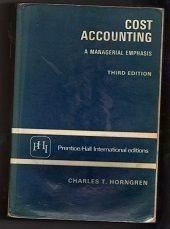Question
On January 1, 2018, the general ledger of Big Blast Fireworks includes the following account balances: Accounts Debit Credit Cash $ 21,900 Accounts Receivable 36,500
On January 1, 2018, the general ledger of Big Blast Fireworks includes the following account balances:
| Accounts | Debit | Credit | ||||
| Cash | $ | 21,900 | ||||
| Accounts Receivable | 36,500 | |||||
| Inventory | 30,000 | |||||
| Land | 61,600 | |||||
| Allowance for Uncollectible Accounts | 3,100 | |||||
| Accounts Payable | 32,400 | |||||
| Notes Payable (8%, due in 3 years) | 30,000 | |||||
| Common Stock | 56,000 | |||||
| Retained Earnings | 28,500 | |||||
| Totals | $ | 150,000 | $ | 150,000 | ||
The $30,000 beginning balance of inventory consists of 300 units, each costing $100. During January 2018, Big Blast Fireworks had the following inventory transactions: January 3 Purchase 1,200 units for $126,000 on account ($105 each).
January 8 Purchase 1,300 units for $143,000 on account ($110 each).
January 12 Purchase 1,400 units for $161,000 on account ($115 each).
January 15 Return 100 of the units purchased on January 12 because of defects.
January 19 Sell 4,000 units on account for $600,000. The cost of the units sold is determined using a FIFO perpetual inventory system.
January 22 Receive $580,000 from customers on accounts receivable.
January 24 Pay $410,000 to inventory suppliers on accounts payable.
January 27 Write off accounts receivable as uncollectible, $2,500.
January 31 Pay cash for salaries during January, $128,000.
Required:
1. Record each of the transactions listed above, assuming a FIFO perpetual inventory system.
a. At the end of January, the company estimates that the remaining units of inventory are expected to sell in February for only $100 each.
b. At the end of January, $4,000 of accounts receivable are past due, and the company estimates that 40% of these accounts will not be collected. Of the remaining accounts receivable, the company estimates that 4% will not be collected.
c. Accrued interest expense on notes payable for January. Interest is expected to be paid each December 31.
d. Accrued income taxes at the end of January are $12,300. 2. Record adjusting entries on January 31 for the above transactions.
a. At the end of January, the company estimates that the remaining units of inventory are expected to sell in February for only $100 each.
b. At the end of January, $4,000 of accounts receivable are past due, and the company estimates that 40% of these accounts will not be collected. Of the remaining accounts receivable, the company estimates that 4% will not be collected.
c. Accrued interest expense on notes payable for January. Interest is expected to be paid each December 31.
d. Accrued income taxes at the end of January are $12,300.
3. Prepare an adjusted trial balance as of January 31, 2018.
4. Prepare a multiple-step income statement for the period ended January 31, 2018.
5. Prepare a classified balance sheet as of January 31, 2018. (Amounts to be deducted should be indicated with a minus sign.)
6. Record closing entries. (If no entry is required for a transaction/event, select "No journal entry required" in the first account field.)
a-1. Calculate the inventory turnover ratio for the month of January.
b-1. Calculate the gross profit ratio for the month of January.
PLEASE COMPLETE THE QUESTIONS.
Step by Step Solution
There are 3 Steps involved in it
Step: 1

Get Instant Access to Expert-Tailored Solutions
See step-by-step solutions with expert insights and AI powered tools for academic success
Step: 2

Step: 3

Ace Your Homework with AI
Get the answers you need in no time with our AI-driven, step-by-step assistance
Get Started


